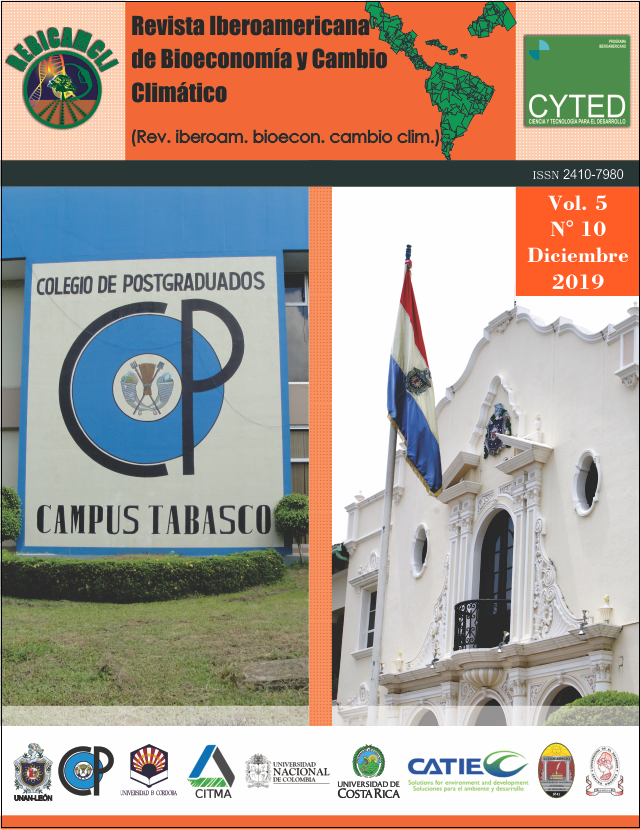In vivo estimation of the pig carcass by the ultrasonography method: An Approach to Eco-Intensification in Porcine Bioeconomics
DOI:
https://doi.org/10.5377/ribcc.v5i10.8966Keywords:
Prediction, Canal, Pigs, Muscle thickness, EcointesificationAbstract
In this study we analyze the relationship between subcutaneous fat thickness (EGS), muscle thickness (MS) and subcutaneous fat thickness and muscle thickness together (EGSM), measured with ultrasound at a single anatomical point of live pigs and more parameters important of the carcass (live weight, carcass weight, meat class A, B, C corresponding to first, second and third category meats, and specific cuts such as loin, leg and needle post). In our experiment we used hybrid pigs of the Pietrain, Landrace and Yorkshire breeds in an amount of 25 animals of both sexes. The results of the study suggest that the parameters of the channel composition analyzed here (Live weight, carcass weight, meat class A, B, C and specific cuts, loin, leg post and needle) are highly correlated with the thickness of subcutaneous fat measured with ultrasound on the last rib of the very long dorsal muscle on the left side of the live pig (r = 0.53 - 0.67). The multiple correlation of the linear regression prediction model between the parameters of the carcass and the thickness of the dorsal fat was (0.74) and the coefficient of determination showed sufficient predictability (R2 = 0.55). The linear regression prediction models of the carcass components with muscle thickness obtained low predictability (R2 = 0.23). Similarly in the regression model of subcutaneous fat thickness and muscle thickness together (R2 = 0.25). Among the most important correlations found are: right loin, class A meat (r = 0.80), live weight and whole carcass (r = 0.85) right shoulder and class B meat (r = 0.88) being this repetitive pattern in all correlations of ultrasonographic measurements and channel components. The results obtained in this work encourage its use as a predictive technique of the composition of the pig carcass in the Ecointensification productive path of the Bioeconomy.
Downloads
Downloads
Published
How to Cite
Issue
Section
License
Copyright © 2022 Rev. iberoam. bioecon. climate change Graduate School and UNAN-León, School of Agricultural and Veterinary Sciences / Department of Agroecology / Center for Research in Bioeconomy and Climate Change (CIByCC).







